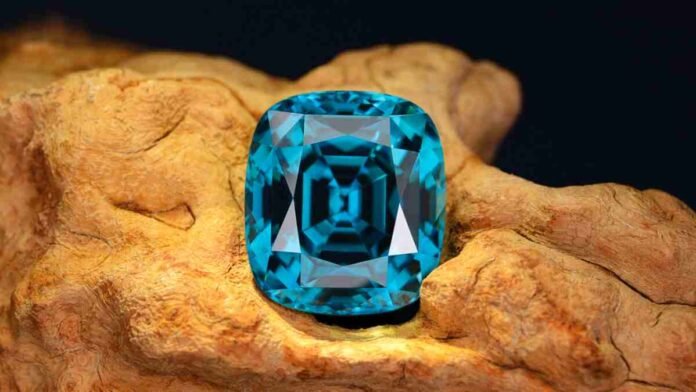Zircon is perhaps the most misunderstood and undervalued gem despite its attraction since it is frequently mistaken with the synthetic substance cubic zirconia.
“I attribute the name. To be clear, zircons are naturally occurring, but cubic zirconias are created in laboratories, according to jewelry designer Lauren Harwell Godfrey, founder of the Harwell Godfrey brand.
According to Vram Minassian, owner of the Los Angeles-based jewelry brand Vram, “More effort being put into educating consumers about its special properties would help improve its popularity in the commercial market.”
The colors of zircons, which range from calm, rich blues to greens and vivid yellows as well as brown and red tones, are almost always enhanced or altered by heat treatment. Even a colorless alternative is available. Zircon is a desirable material for designers and customers looking for a unique visual appeal because of its range of colors, affordability, and fire.
Due to its underutilization in jewelry design, zircon may be a distinctive element for jewelers who do employ it.
Harwell Godfrey’s exuberant and vibrant compositions are well complemented by the gem’s bright sparkle and strong colours. The designer states, “I’ve used a really juicy heart shape and a big beautiful cushion in the blue color—both for rings—but I’m currently loving brown zircon and want to use it in a cocktail ring.” “The blue variety and its turquoise color are my obsession. Only Paraiba tourmaline comes close to matching that, and they are far more costly.
Zircon is used by Minassian “mainly because of the incredible intensity and variety of color, the dispersion, and the durability,” he claims. His Oak Chrona earrings, which have a variety of round brilliant-cut stones in brown and orange, make use of its earthy fall hues. To create eye-catching focal points, he also uses components like rose cuttings that are formed like an inverted pear.
Paula Crevoshay, a jewelry designer, claims that “green is the rarest color of zircon,” but she has nonetheless been able to obtain two sizable cabochons of natural-color green zircon for her designs. The 32.83-carat gemstone that is set on her Green Tara cuff is one example. The other is a 43.79-carat gemstone from Ratnapura, Sri Lanka, which she encircled with four green tourmalines in her George pendant, which became the first item of zircon jewelry to be included to the Smithsonian Institution’s National Gem Collection.
While blue and white zircons are heat-treated and widely accessible, large green zircons are so uncommon that they are practically hard to locate. As a result, I employ the latter two whenever I believe they would enhance my content. The works of Crevoshay come in a wide range of sizes, from massive center stones to tiny pavé accent stones.
Made for success
According to regional manager Josh Saltzman of gem-cutting company Nomad’s, the bulk of the zircon collection is made up of rounds and ovals since these shapes best display the stones’ brightness and dispersion. He continues by noting the popularity of the cushion, hexagon, and emerald cuts.
In the Ratanakiri area of Cambodia, a tiny artisanal zircon mine is owned by Mohsin Mansoori of the gem dealer Mohra India. He claims that the Indian market loves ovals and more included stones, whereas the US and European markets often go for “loupe-clean stones, Asscher and cushion cuts.”
According to him, 90% of purchasers choose blue, with some choosing brown and white. In Europe and Japan, high-quality blue zircon is particularly well-liked. However, during the past four years, production has decreased by more than 70%.
According to Saltzman, it’s still difficult to get clean top colors. “For blue zircon, we look for a bright, pure blue color without unpleasant undertones and [with] an] even color, as color zoning can be an issue with zircon.”
The proper cost
Zircon may be more well-liked than other stones with comparable hues because to its affordable price range. Despite price increases, they “are still much lower than a saturated blue aquamarine or indicolite tourmaline, and of course much less than sapphire or diamond (for the colorless stones),” according to Josh Saltzman of Nomad’s.
According to Mohsin Mansoori of Mohra India, the blue type frequently sells for more than other hues at wholesale. According to him, the price of a top 10-carat blue zircon can range from $150 to $200 per carat, while 20-carat stones cost $300 to $400 per carat and 50-carat specimens cost between $450 and $750 per carat.
According to Saltzman, it’s growing harder to find fine gemstones larger than 15 carats. Prices will continue to rise as production costs rise globally, as they do for pretty much everything. He anticipates continued strong demand for high-quality products because they “fill a niche of lovely blue colors at an affordable price point.”




